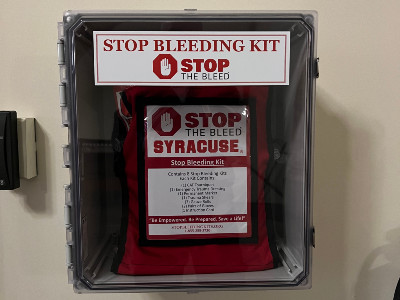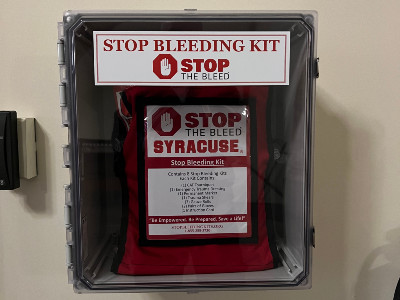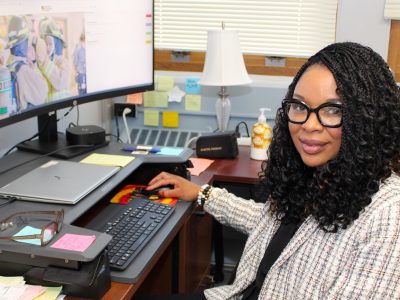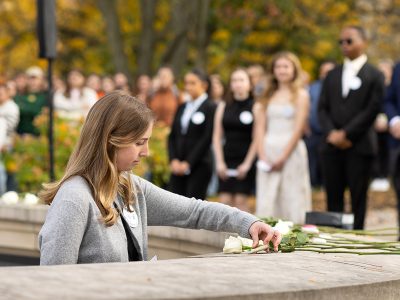Syracuse University Ambulance Deploys Stop the Bleed Kits Across Campus
Stop the Bleed kits have been installed in various locations across the University, empowering members of the campus community to act in the event of a life-threatening bleeding emergency. The installation is an initiative of Syracuse University Ambulance (SUA) with assistance from Campus Safety and Emergency Management and Facilities Services.
A total of 276 kits are deployed across the University’s North and South campuses, the Nancy Cantor Warehouse and Minnowbrook Conference Center in Blue Mountain Lake, New York. The kits are included in 17 stand-alone wall units and at 31 automated external defibrillator (AED) stations.

Each kit contains a Combat Application (CAT) tourniquet; emergency trauma dressing; three gauze rolls; two pairs of gloves, a permanent marker and an instruction card. The kits are intended for use in emergency situations only. Training in the use of the kits is available through SUA.
“Research has shown that bystanders, with little or no medical training, can become heroic lifesavers. Uncontrolled bleeding injuries can result from natural and manmade disasters and from everyday accidents,” says Paul Smyth, the University’s manager of emergency medical services. “Providing bystanders with basic tools and information on the simple steps they can take in an emergency situation to stop life-threatening bleeding can save lives.”
“Similar to the use of cardiopulmonary resuscitation or automatic defibrillators, improving public awareness about how to stop severe bleeding and expanding personal and public access to bleeding control kits can be the difference between life and death for an injured person,” Smyth says.
Stop the Bleed, an initiative of the American College of Surgeons, was launched at a White House event in 2015 to provide bystanders of emergency situations with the tools and knowledge to stop life-threatening bleeding. The goal is to ensure that the general public has access to the proper training and tools needed to provide critical life-saving care.
Stop the Bleed kits are in use at other peer institutions, Smyth says.
SUA has trained its emergency medical technician certified staff to teach the Stop the Bleed training class (with a ratio of one instructor per 10 students). The organization trained approximately 170 University staff members over the summer, and now offers bimonthly training sessions for groups of 20, open to all members of the campus community.
For more information on attending or scheduling a training session, contact Smyth at pjsmyth@syr.edu.



